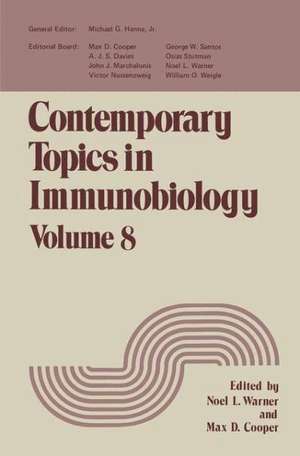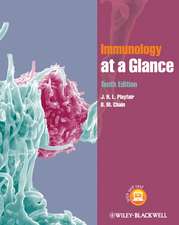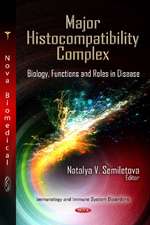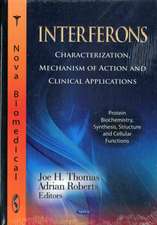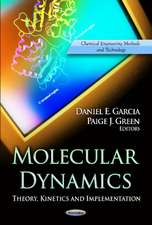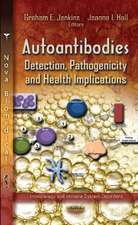Contemporary Topics in Immunobiology: Volume 8
Editat de Noel Warneren Limba Engleză Paperback – 8 mar 2012
Preț: 368.37 lei
Preț vechi: 387.75 lei
-5% Nou
Puncte Express: 553
Preț estimativ în valută:
70.51€ • 76.62$ • 59.27£
70.51€ • 76.62$ • 59.27£
Carte tipărită la comandă
Livrare economică 21 aprilie-05 mai
Preluare comenzi: 021 569.72.76
Specificații
ISBN-13: 9781468409246
ISBN-10: 1468409247
Pagini: 288
Ilustrații: XIV, 272 p.
Dimensiuni: 155 x 235 x 15 mm
Greutate: 0.41 kg
Ediția:Softcover reprint of the original 1st ed. 1978
Editura: Springer Us
Colecția Springer
Locul publicării:New York, NY, United States
ISBN-10: 1468409247
Pagini: 288
Ilustrații: XIV, 272 p.
Dimensiuni: 155 x 235 x 15 mm
Greutate: 0.41 kg
Ediția:Softcover reprint of the original 1st ed. 1978
Editura: Springer Us
Colecția Springer
Locul publicării:New York, NY, United States
Public țintă
ResearchCuprins
1 Influence of Genes of the Major Histocompatibility Complex on theReactivity of Thymus-Derived Lymphocytes.- I. Introduction.- II. Constraints Imposed on T-Cell Activities by Genes of the Major Histocompatibility Complex.- III. Implications of MHC-Imposed Restrictions for Antigen Perception by T Lymphocytes.- IV.MHC-Linked Ir Gene Control of Immune Responsiveness.- V.Relationship between MHC-Imposed Constraints and MHC-Linked Ir Gene Control of Immune Responsiveness.- VI.Concluding Remarks.- VII.References.- 2 Characterization of Human T-Cell Subpopulations as Defined by Specific Receptors for Immunoglobulins.- I. Introduction.- II. Basic Features of Distinct T-Cell Subpopulations and Their Receptors for Immunoglobulins.- III. Functional Analysis of T.M and T.G Cells.- IV. T.M and T.G Cells in Immunodeficiency Diseases and Malignancies.- V. Concluding Remarks and Speculations.- VI. References.- 3 Metazoan and Protozoan Parasitic Infections in Nude Mice.- I. Introduction.- II. Nematodes.- III. Cestodes.- IV. Trematodes.- V. Protozoa.- VI. Concluding Remarks.- VII. References.- 4 In Vitro Induction and Expression of T-Cell Immunity to Tumor-Associated Antigens.- I. Introduction.- II. Methodology.- III. Induction of CL in “Unstimulated” Cultures.- IV. Role of theMHC at theInductive Phase of T-Cell Immunity in Vitro to TAA.- V. Role of theMHC at theEffector Phase of Tc Immunity in Vitro to TAA.- VI. Comments and Conclusions.- VII. References.- 5 Systemic and Local Immunity in Allograft and Cancer Rejection.- I. Introduction.- II. Histology of Allograft Rejection and Host Response against Solid Tumors.- III. Effector Mechanisms in the Central Lymphatic System.- IV. Isolation of Infiltrating Cells and Antibodies from Allografts and Tumors.- V. Identification ofInfiltrating Cells in Allografts and Tumors.- VI. Effector Mechanisms Inside Allografts and Tumors.- VII. Correlations between Local and Systemic Immunity.- VIII. Concluding Remarks.- IX. References.- 6 Natural Killer Cells in theMouse: An Alternative Immune Surveillance Mechanism?.- I. Introduction.- II. General Characteristics of theNK System.- III. Specificity of Mouse NK Cytolytic Activity.- IV. Effector Cell Analysis.- VI. Influence of Genetic and Nongenetic Factors on NK Activity.- VI. Relationship between NK Activity and Resistance to Hemopoietic Grafts.- VII. Generation of NK Cells in Vivo.- VIII. Concluding Remarks.- IX. References.- 7 Allotypes of IgM and IgD Receptors in theMouse: A Probe for Lymphocyte Differentiation.- I. Lymphocyte Surface Immunoglobulin.- II. Preparation of Antisera to Murine IgD.- III. Allotypes of Murine IgM.- IV. Immunofluorescence Studies of Surface IgM and IgD.- V. Implications for Organization of Immunoglobulin Heavy-Chain Genes.- VI. Functional Role of B-Cell Receptors.- VII. Summary.- VIII. References.- 8 Immunoglobulin Isotype Expression.- I. Introduction.- II. Ontogeny of Immunoglobulin Isotypes.- III. In Vitro Activation of Mouse B Cells.- IV. Conclusions.- V. References.
